Welding machines are instrumental in achieving optimal welding performance, as they directly influence the efficiency and quality of welds. This informative article will delve into the critical aspects of welding machines, offering valuable insights, and expert recommendations to enhance welding outcomes. The pillar post topics covered in this article are designed to provide a comprehensive understanding of optimizing welding performance with welding machines.
A. Importance of Welding Machines in Welding Performance
Welding machines serve as the backbone of the welding process, facilitating the fusion of metals to create strong and durable bonds. These machines offer precise control over various welding parameters, enabling operators to achieve desired weld characteristics and meet industry standards. The type and quality of welding machines used significantly impact the overall productivity, efficiency, and cost-effectiveness of welding operations.
B. Overview of the Pillar Post Topics
The article will explore the following topics in a structured manner, focusing on practical advice and technical know-how to enhance welding performance:
- Welding Techniques and Best Practices
- Maximizing Weld Quality and Strength
- Efficient Heat Management and Control
- Selecting the Right Filler Metal and Electrode for Welding
- Overcoming Common Welding Challenges
- Welding Different Materials and Thicknesses
- Training and Skill Development for Welding Machine Operators
II. Welding Techniques and Best Practices
A. Understanding Different Welding Techniques
MIG/MAG Welding:
- Also known as Gas Metal Arc Welding (GMAW).
- Uses a consumable wire electrode and shielding gas.
- Suitable for various materials, including carbon steel, stainless steel, and aluminum.
- Provides high welding speeds and is ideal for semi-automatic or automatic applications.
TIG Welding:
- Tungsten Inert Gas Welding, also called Gas Tungsten Arc Welding (GTAW).
- Utilizes a non-consumable tungsten electrode and inert gas shielding.
- Produces precise and high-quality welds with excellent control over heat input.
- Commonly used for thin materials, critical joints, and alloys.
Stick Welding (SMAW):
- Shielded Metal Arc Welding, referred to as stick or arc welding.
- Involves a coated electrode that acts as the filler metal and provides shielding.
- Suitable for outdoor and remote welding due to its portability and versatility.
- Ideal for heavy-duty applications and works well with carbon steel, stainless steel, and cast iron.
Flux-Cored Arc Welding (FCAW):
- Similar to MIG/MAG welding but uses a tubular flux-cored electrode.
- Provides higher deposition rates and deeper penetration than solid wire welding.
- Offers better performance in windy conditions and works with a variety of metals.
B. Best Practices for Welding Machine Operation
Preparing the Workpiece and Workspace:
- Thoroughly clean and remove any contaminants from the workpiece surface.
- Ensure proper joint preparation, such as beveling or chamfering, as required.
- Securely clamp the workpiece to prevent movement during welding.
Proper Electrode and Filler Metal Selection:
- Select the appropriate electrode and filler metal based on the base metal and welding technique.
- Consider the material composition, mechanical properties, and application requirements.
Controlling Welding Parameters (Current, Voltage, Speed):
- Adhere to the recommended welding parameters provided by the equipment and electrode manufacturers.
- Maintain a consistent travel speed and arc length for uniform weld bead formation.
Managing Welding Distortion:
- Use proper joint design and welding sequence to minimize distortion.
- Employ pre-heating or post-weld heat treatment techniques for certain materials and applications.
Ensuring Welding Safety:
- Wear appropriate Personal Protective Equipment (PPE), including welding helmets, gloves, and clothing.
- Maintain a well-ventilated workspace to minimize exposure to welding fumes.
- Inspect and maintain welding equipment regularly for safe and reliable operation.
III. Maximizing Weld Quality and Strength
A. Factors Affecting Weld Quality
Welding Machine Calibration and Maintenance
- Proper calibration of welding machines ensures accurate and consistent performance.
- Regular maintenance prevents malfunctions and ensures reliable operation.
- Well-maintained machines contribute to stable arc characteristics and optimal weld quality.
Cleanliness and Shielding Gas
- Ensuring a clean work environment and contaminant-free base materials is crucial for high-quality welds.
- Contaminants like rust, oil, or paint can negatively affect weld integrity and lead to defects.
- Utilizing appropriate shielding gas, such as argon or CO2, protects the molten weld pool from atmospheric contamination.
Weld Joint Preparation
- Proper preparation of the weld joint directly impacts the strength and quality of the weld.
- Beveling, chamfering, and cleaning the joint surface help achieve sound fusion between base materials.
- Correct joint design and fit-up contribute to minimizing defects and achieving full penetration.
Welding Speed and Technique
- Controlling welding speed and technique is vital for achieving desired weld characteristics.
- Excessive heat input from slow welding may cause distortion and reduce weld strength.
- Proper techniques, like maintaining a consistent travel speed and electrode angle, promote uniform bead formation.
B. Evaluating Weld Strength and Integrity
Non-Destructive Testing (NDT) Methods
- NDT methods are essential for assessing weld quality without damaging the finished product.
- Techniques such as ultrasonic testing, radiography, and magnetic particle inspection reveal internal defects.
- NDT enables early detection of flaws, allowing corrective measures before the weld reaches its intended service.
Tensile, Bend, and Impact Tests
- Mechanical testing provides valuable data about the weld's strength and ductility.
- Tensile tests measure the weld's resistance to forces pulling it apart.
- Bend tests assess the weld's ductility and its ability to withstand bending forces.
- Impact tests determine the weld's toughness and ability to withstand sudden shock or stress.
Quality Control and Inspection
- Implementing a comprehensive quality control and inspection process ensures consistent weld quality.
- Regular inspection checks adherence to welding standards and specifications.
- Documentation of inspection results allows for traceability and continuous improvement.
IV. Efficient Heat Management and Control
A. Importance of Heat Management in Welding
- Heat management is a critical aspect of welding that significantly influences the overall welding performance and the quality of the final welds.
- Proper heat control ensures that the welding process is optimized for efficiency, weld integrity, and overall structural strength.
- Effective heat management minimizes the risk of defects such as cracks, distortions, and weakened mechanical properties, which are common issues associated with improper heat application during welding.
- By maintaining precise control over the heat input, welders can achieve consistent and reliable results, reducing the need for costly rework and ensuring compliance with industry standards.
B. Controlling Heat Input and Heat Affected Zone (HAZ)
- Heat input refers to the total amount of heat energy applied to the base metals during welding, and it plays a crucial role in determining the weld's characteristics.
- Welders must carefully manage the heat input to avoid excessive heating or insufficient fusion, both of which can compromise the weld's structural integrity.
- Controlling the Heat Affected Zone (HAZ) is equally vital, as this area around the weld experiences thermal changes that can lead to metallurgical alterations and potential weaknesses if not managed properly.
- Techniques such as adjusting welding parameters, controlling travel speed, and using appropriate welding processes contribute to maintaining optimal heat input and minimizing the size and impact of the HAZ.
C. Preheating and Post-Weld Heat Treatment
- Preheating involves raising the base metal's temperature to a specific level before the welding process begins.
- Preheating is particularly beneficial when working with materials prone to cracking or with high carbon content, as it helps reduce the risk of hydrogen-induced cracking and ensures better weldability.
- Post-weld heat treatment (PWHT) involves subjecting the completed weld to controlled heating and cooling cycles to relieve residual stresses and improve the weld's mechanical properties.
- PWHT is commonly used for critical welds, as it enhances the weld's toughness and reduces the risk of brittleness or failure under demanding conditions.
D. Minimizing Distortion and Residual Stresses
- Distortion is the undesired deformation of the welded components that occurs due to the thermal expansion and contraction during welding.
- Proper heat management can help minimize distortion by reducing the temperature gradient between the weld zone and the surrounding material.
- Additionally, using proper fixturing and welding sequence techniques can mitigate distortion and ensure that the final product retains its intended shape and dimensions.
- Residual stresses, which result from uneven cooling after welding, can also compromise the weld's performance over time.
V. Selecting the Right Filler Metal and Electrode for Welding
Understanding filler metal types and classifications:
- Filler metals are essential consumables used in welding processes to join two base metals together.
- They come in various types and classifications, each designed for specific applications and base metal combinations.
- Proper understanding of filler metal properties is crucial for achieving the desired weld quality and strength.
Matching filler metals to base metals for optimal results:
- Selecting the right filler metal involves considering the base metal's composition, mechanical properties, and intended application.
- Matching filler metals ensure compatibility and promote the formation of sound welds.
- Welders must refer to industry standards and guidelines to identify suitable filler metals for specific base metals.
Impact of electrode coatings on welding outcomes:
- Electrodes used in welding often come with coatings that serve specific purposes during the welding process.
- These coatings can influence the weld bead shape, arc stability, and the final mechanical properties of the weld.
- Welders need to comprehend the characteristics of different coatings to make informed decisions while choosing electrodes.
Considerations for welding dissimilar metals with suitable filler materials:
- Joining dissimilar metals presents unique challenges due to their different compositions and thermal expansion rates.
- Proper filler metal selection becomes critical to achieve strong, durable welds in dissimilar metal welding.
- Welders must analyze material compatibility and consult welding guidelines to determine the appropriate filler materials for such applications.
VI. Overcoming Common Welding Challenges
Identifying and addressing welding defects and their root causes:
- Welding defects can compromise weld integrity and performance, leading to potential failures.
- Porosity, caused by trapped gas in the weld pool, can weaken the joint and reduce its load-carrying capacity.
- Cracks may result from excessive stress or poor welding techniques, necessitating immediate attention and corrective actions.
- Lack of fusion or penetration occurs when the weld metal fails to fully fuse with the base metal, affecting joint strength.
- Spatter, the ejection of molten metal during welding, can mar the appearance of the weld and may cause safety hazards.
Troubleshooting techniques and corrective actions:
- Skilled welders must be adept at identifying the specific causes of welding defects to implement effective solutions.
- Adjusting welding parameters, such as voltage, current, and travel speed, can often rectify issues like lack of fusion and spatter.
- Preheating the workpiece or post-weld heat treatment might be necessary to address cracking and residual stress problems.
- In-depth knowledge of welding metallurgy and process variables is vital in troubleshooting welding challenges.
Implementing preventive measures to ensure consistent weld quality:
- Prevention is the key to maintaining high weld quality and avoiding defects.
- Ensuring proper welding machine calibration and maintenance reduces the risk of welding issues arising from equipment problems.
- Comprehensive weld joint preparation, including cleaning and proper fit-up, minimizes the potential for defects during welding.
- Adhering to established welding procedures and industry standards helps maintain consistent weld quality throughout projects.
VII. Welding Different Materials and Thicknesses
A. Welding Carbon Steel, Stainless Steel, Aluminum, and Other Alloys
Welding Carbon Steel:
- Carbon steel is commonly welded using various processes such as MIG/MAG, TIG, and Stick welding.
- Proper electrode and filler metal selection is essential to achieve strong and durable welds.
- Consider preheating to prevent cracking and post-weld heat treatment for stress relief.
Welding Stainless Steel:
- Stainless steel welding requires special attention due to its chromium content and susceptibility to sensitization.
- Use low carbon filler metals to avoid carbide precipitation and intergranular corrosion.
- Employ back purging to maintain corrosion resistance in the weld zone.
Welding Aluminum:
- Aluminum welding is best accomplished using the TIG or MIG process with the appropriate filler metal.
- Use a dedicated aluminum wire feeder for MIG welding to prevent feeding issues.
- Clean the base metal thoroughly to avoid contamination and use proper shielding gas for quality welds.
Welding Other Alloys:
- Different alloys, such as copper, nickel, and titanium, require specific welding techniques.
- Research and understand the unique properties of each alloy before welding.
- Consult alloy manufacturers' recommendations for suitable welding procedures.
B. Adjusting Welding Techniques for Varying Material Thicknesses
Thin Material Welding:
- Use lower heat input to avoid burn-through and distortion in thin materials.
- Employ pulse welding techniques for precise heat control in thin metal sections.
- Consider tack welding to secure thin pieces before making the final weld.
Thick Material Welding:
- Preheating may be necessary for thick materials to ensure proper fusion and reduce cooling rates.
- Employ multi-pass welding techniques with suitable interpass temperatures.
- Use prequalified welding procedures and ensure adequate penetration for thick joints.
C. Multi-material Welding Considerations
Welding Dissimilar Metals:
- Identify the compatibility of base metals and filler metals to prevent galvanic corrosion.
- Employ appropriate filler metals and welding techniques to join dissimilar materials.
- Consider using intermediate materials or transition joints for challenging combinations.
Clad Welding:
- Clad welding involves joining two different metals, usually in sheet or plate form.
- Ensure proper surface preparation and select appropriate filler materials for a reliable bond.
- Maintain uniform heat distribution to prevent delamination and defects in the clad layer.
Hybrid Welding Processes:
- Hybrid welding combines different welding techniques (e.g., laser and arc welding) for specific applications.
- Understand the advantages and limitations of hybrid processes to optimize results.
- Conduct thorough testing and validation when implementing novel hybrid welding methods.
VIII. Training and Skill Development for Welding Machine Operators
A. Importance of Skilled Welding Machine Operators
- Skilled operators play a pivotal role in ensuring welding quality, productivity, and safety.
- Proper training and expertise reduce the risk of defects and costly rework.
- Operators contribute significantly to the overall efficiency of welding operations.
B. Training Programs and Certifications
- Enroll in accredited welding training programs to acquire fundamental skills and knowledge.
- Seek certifications from reputable organizations to validate expertise and proficiency.
- Continuous professional development enhances operator capabilities and widens career opportunities.
C. Continuous Skill Development and Keeping Up with Industry Advancements
- Stay updated with the latest welding technologies, materials, and best practices.
- Attend workshops, seminars, and industry events to learn from experts and peers.
- Engage in hands-on practice and embrace feedback to refine welding techniques.






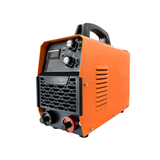
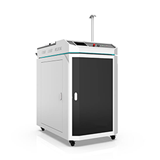
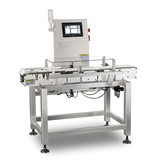
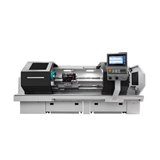
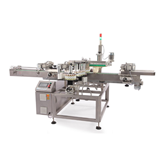
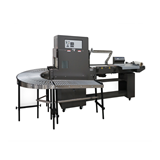
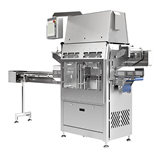
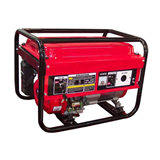




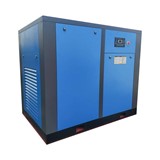

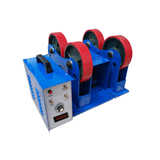
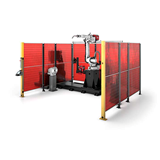

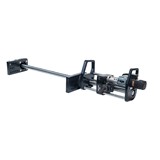
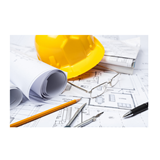
-205x205.png)

-205x205.png)

